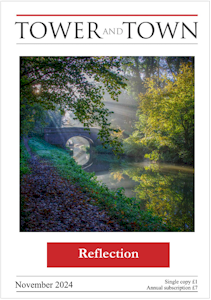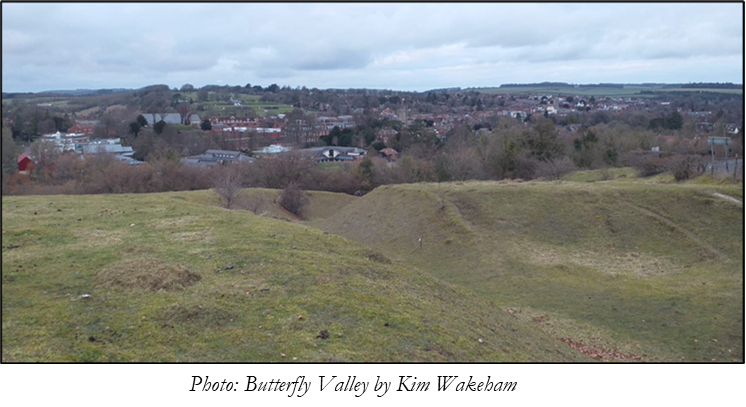

Tower and Town, November 2024 (view the full edition) (view the full edition)Treacle Bolly Part IIMy previous article (August Tower & Town) looked at Prehistoric Treacle Bolly - this article looks at the archaeological evidence from the last 2000 years until WW2. As previously, what3words is used to help enable you to identify an area. When the Romans arrived in 43 AD, they quickly settled around Marlborough. Settlements were established, for example Cunetio, near Minal. However, there is little evidence of Roman activity in Treacle Bolly, but future archaeological work may shed more light. Evidence for Anglo-Saxon settlement is also scarce, but there is a section of the Wandsdyke on the top of Granham Hill. A bank and ditch can be easily identified (lousy.feasted.appetite) and it could be a continuation of the Wandsdyke found in nearby West Woods. Place name evidence also hints at possible Saxon settlement in or nearby Treacle Bolly. The names include: Granham Hill (Gran = Granta's settlement hamm = land hemmed in by water or marsh or possibly by high ground or a river-meadow) Preshute (preost = priest, cyte = cottage; a hermit's or monk's cell). The biggest influence on the landscape of Treacle Bolly was the building of Marlborough Castle. The construction of the castle began in the 11th century before it was abandoned and became a ruin in the 15th century. The Kennet was rerouted and managed to feed fish ponds, supply the castle with water and possibly also to fill the castle moat. The river was also managed to power the many mills along the Kennet Valley. Castle Mill (located on the opposite side of the river from Washpool Cottage) was built in the 12th century, initially as a corn mill but by the early 17th century it was being used as a fulling mill and a dye house. Evidence of the wool trade in Marlborough can also be found at Washpool (kipper.foggy.embodied). Fed by a series of natural springs, the pool was used to wash the sheep prior to being shorn. The influence of keeping animals can also be found on the slopes of Treacle Bolly where two earthen mounds can be found. These mounds (expired.backs.newer and sizing.worthy.growth) are likely to be artificial Rabbit Warrens. Introduced by the Normans, Rabbit Warrens were built to house large numbers of rabbits to provide meat and fur, almost certainly, to the inhabitants of Marlborough Castle. Animals also played a part in the construction of the numerous water meadows in the 17th - 19th century along the Kennet Valley. Water meadows were a form of intensive agriculture which used the water from the river to keep the meadows damp, thereby increasing the grass yield of the land to feed sheep and cattle. Traces of the complicated set up of sluices, channels and the familiar corrugated-iron-like humps and bumps can be seen from the footbridge over the river at Preshute. In 1804, Treacle Bolly saw the cutting of Preshute White Horse (mountains.refuses.sting). The horse was designed by William Canning, who was a pupil at Mr Greasley's Academy, located in what is now the Ivy House. 
The arrival of Marlborough College in 1843 continued to shape and change Treacle Bolly. The many buildings clustered around the Mound changed the view into Marlborough, whilst the athletics track was built in 1950 and there have subsequent additions of tennis courts and a pavilion. Another change in the landscape was the moving of the Pewsey road to its current course (now the A345) sometime between the 1880s - 1900s. The old course of the road, known locally as Butterfly Valley (what3words location monorail.shout.prelude), is now an atmospheric hollow-way - a sunken road worn into the chalk by centuries of people and animals. Treacle Bolly also contains several features which are not able to be dated accurately, for example banks, ditches and flint quarries. The landscape certainly warrants further investigation. Next time you visit Treacle Bolly, take a moment to think about the 6000 years of change that have occurred, and see if you can find the archaeological evidence of that change for yourselves. And let me know what you find! Kim Wakeham |